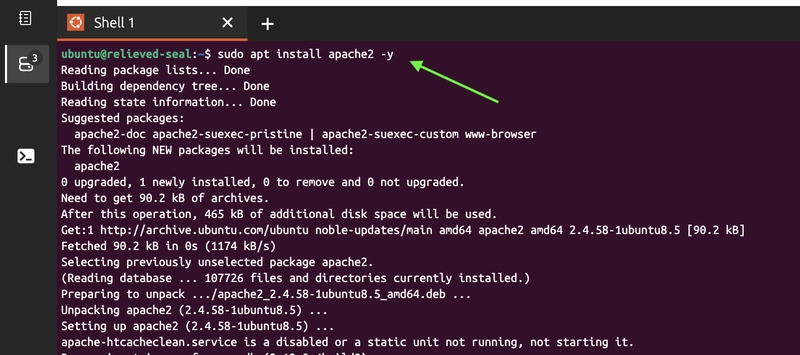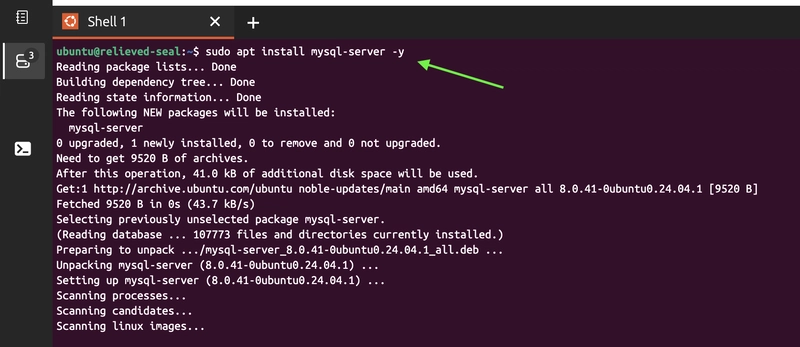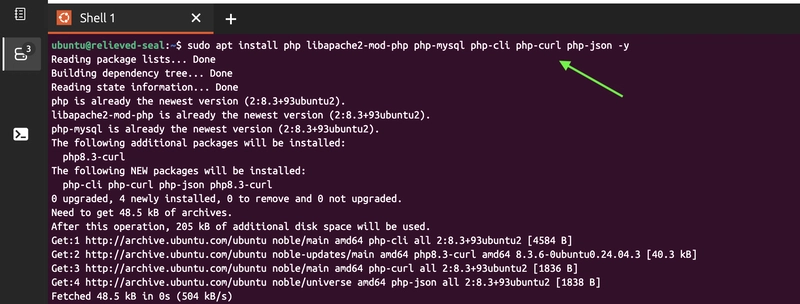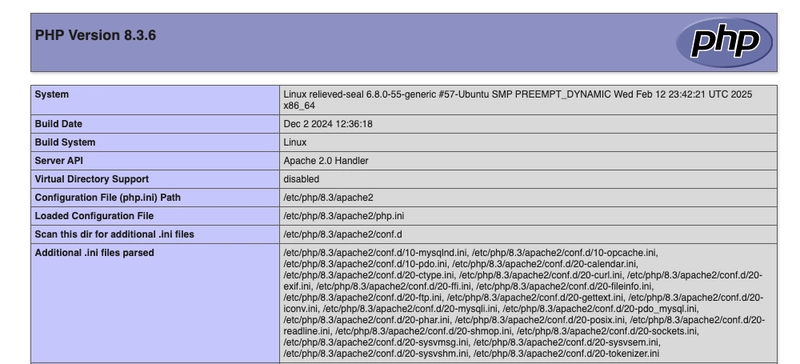A Step-by-Step Guid on How to Set Up and Deploy a LAMP Stack on a Linux Server
How to Deploy a LAMP Stack in Linux The LAMP stack (Linux, Apache, MySQL, PHP) is a popular open-source web development platform used to host dynamic websites and applications. This guide will walk you through setting up a LAMP stack on a Linux server. Prerequisites A Linux-based server (Ubuntu, Debian, CentOS, or any other Linux distribution) A user account with sudo privileges Basic knowledge of the Linux command line Step 1: Update Your System Before installing any software, update the package repository to ensure you get the latest versions: sudo apt update && sudo apt upgrade -y # For Uduntu/Debian-based systems Step 2: Install Apache Web Server Apache is the most widely used web server for hosting websites. Install Apache sudo apt install apache2 -y # Ubuntu/Debian Start and Enable Apache sudo systemctl start apache2 # Ubuntu/Debian sudo systemctl enable apache2 # Enable on boot Verify Apache Installation Open a web browser and navigate to your server's IP address: http://your-server-ip -Use ip addr show to check the IP address of your server. If Apache is running, you should see the default Apache welcome page. Step 3: Install MySQL Database Server MySQL is the database component of the LAMP stack. Install MySQL sudo apt install mysql-server -y # Ubuntu/Debian Secure MySQL Installation sudo mysql_secure_installation Follow the prompts to set a root password and remove unnecessary settings for security. Step 4: Install PHP PHP is the scripting language that processes dynamic content. Install PHP and Required Modules sudo apt install php libapache2-mod-php php-mysql php-cli php-curl php-json -y # Ubuntu/Debian Restart Apache to Apply Changes sudo systemctl restart apache2 # Ubuntu/Debian Test PHP Installation Create a test PHP file: echo "" | sudo tee /var/www/html/info.php Then access it in a browser: http://your-server-ip/info.php If PHP is installed correctly, you will see the PHP info page. Step 5: Configure Firewall (If Necessary) To allow web traffic, open the necessary ports: sudo ufw allow 80/tcp # Ubuntu/Debian sudo ufw allow 443/tcp Conclusion You have successfully deployed a LAMP stack on your Linux server! You can now start developing and hosting your websites using Apache, MySQL, and PHP.
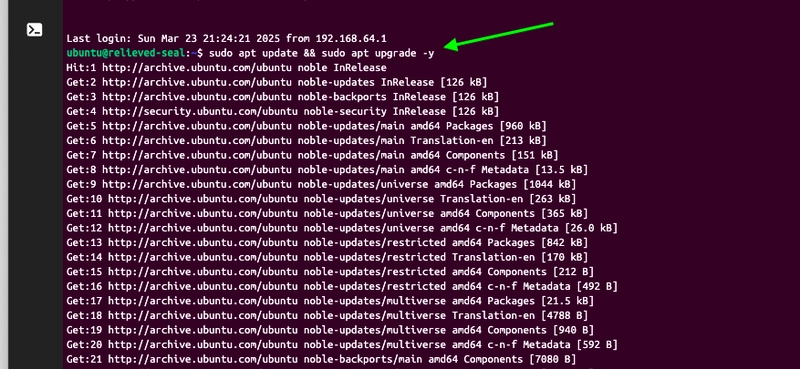
How to Deploy a LAMP Stack in Linux
The LAMP stack (Linux, Apache, MySQL, PHP) is a popular open-source web development platform used to host dynamic websites and applications. This guide will walk you through setting up a LAMP stack on a Linux server.
Prerequisites
- A Linux-based server (Ubuntu, Debian, CentOS, or any other Linux distribution)
- A user account with sudo privileges
- Basic knowledge of the Linux command line
Step 1: Update Your System
Before installing any software, update the package repository to ensure you get the latest versions:
sudo apt update && sudo apt upgrade -y # For Uduntu/Debian-based systems
Step 2: Install Apache Web Server
Apache is the most widely used web server for hosting websites.
Install Apache
sudo apt install apache2 -y # Ubuntu/Debian
Start and Enable Apache
sudo systemctl start apache2 # Ubuntu/Debian
sudo systemctl enable apache2 # Enable on boot
Verify Apache Installation
Open a web browser and navigate to your server's IP address:
http://your-server-ip
-Use ip addr show to check the IP address of your server.
If Apache is running, you should see the default Apache welcome page.
Step 3: Install MySQL Database Server
MySQL is the database component of the LAMP stack.
Install MySQL
sudo apt install mysql-server -y # Ubuntu/Debian
Secure MySQL Installation
sudo mysql_secure_installation
Follow the prompts to set a root password and remove unnecessary settings for security.
Step 4: Install PHP
PHP is the scripting language that processes dynamic content.
Install PHP and Required Modules
sudo apt install php libapache2-mod-php php-mysql php-cli php-curl php-json -y # Ubuntu/Debian
Restart Apache to Apply Changes
sudo systemctl restart apache2 # Ubuntu/Debian
Test PHP Installation
Create a test PHP file:
echo "" | sudo tee /var/www/html/info.php
Then access it in a browser:
http://your-server-ip/info.php
If PHP is installed correctly, you will see the PHP info page.
Step 5: Configure Firewall (If Necessary)
To allow web traffic, open the necessary ports:
sudo ufw allow 80/tcp # Ubuntu/Debian
sudo ufw allow 443/tcp
Conclusion
You have successfully deployed a LAMP stack on your Linux server! You can now start developing and hosting your websites using Apache, MySQL, and PHP.












































































































































































![[The AI Show Episode 142]: ChatGPT’s New Image Generator, Studio Ghibli Craze and Backlash, Gemini 2.5, OpenAI Academy, 4o Updates, Vibe Marketing & xAI Acquires X](https://www.marketingaiinstitute.com/hubfs/ep%20142%20cover.png)















































































































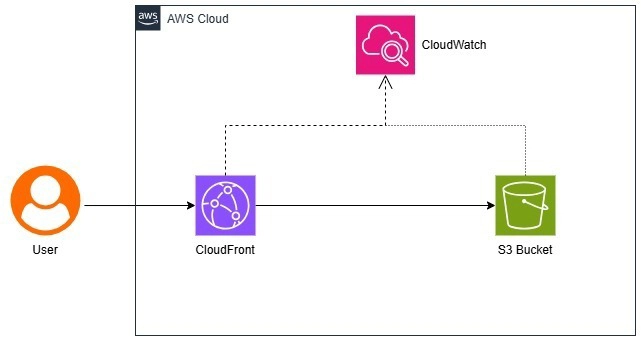











![[FREE EBOOKS] The Kubernetes Bible, The Ultimate Linux Shell Scripting Guide & Four More Best Selling Titles](https://www.javacodegeeks.com/wp-content/uploads/2012/12/jcg-logo.jpg)



![From drop-out to software architect with Jason Lengstorf [Podcast #167]](https://cdn.hashnode.com/res/hashnode/image/upload/v1743796461357/f3d19cd7-e6f5-4d7c-8bfc-eb974bc8da68.png?#)





































































































.png?#)





.jpg?#)































_Christophe_Coat_Alamy.jpg?#)







































































































![Rapidus in Talks With Apple as It Accelerates Toward 2nm Chip Production [Report]](https://www.iclarified.com/images/news/96937/96937/96937-640.jpg)





































































































































